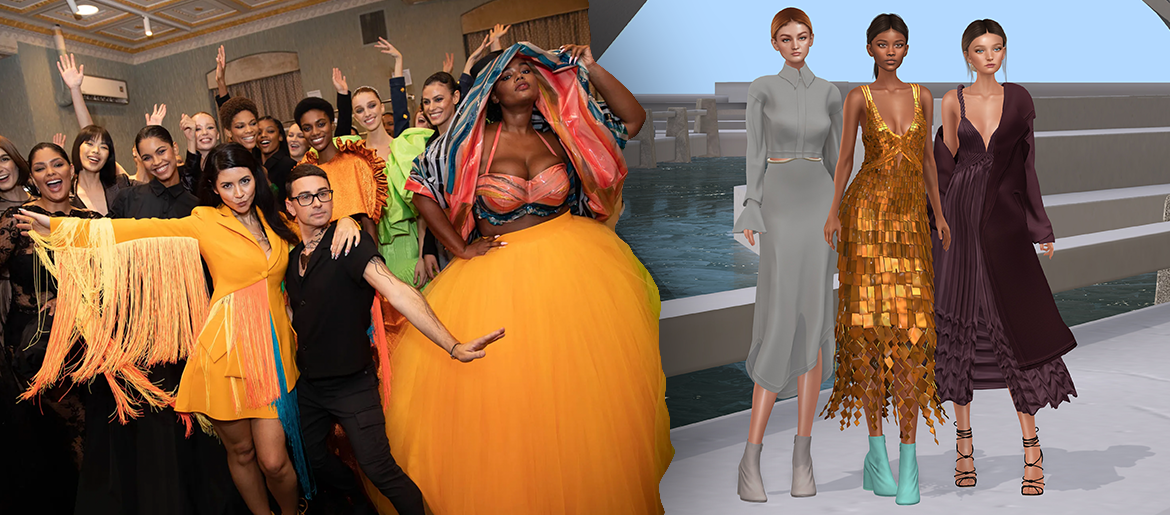
Way back in the day, I used to have a fashion blog. Or rather, a “fatshion” blog – I was a woman who was just coming to terms with loving her plus-sized body and I wanted to develop the confidence to share it. I had a website where I shared outfit photos, talked about trends on the catwalk and what it was like trying to be a fashionable young woman in a world who didn’t want to make clothing for her. I was a part of a number of inclusive groups (shout out to wardrobe_remix on flickr) and felt like I had found a diverse community that wasn’t reflected in magazines and other websites.
When fashion blogs gave way to Tumblr, and I started posting there. There was a popular tag called #fatshionfebruary where, each February, plus-sized people around the world posted their outfit photos. A real sense of community developed during that month and, as a plus-sized woman who is into fashion, I finally felt like I belonged. The online communities that developed during this time allowed the space and freedom to express myself in ways I felt like I couldn’t in real life.
New platforms, old problems
Then came Instagram and after that, TikTok. I was excited to potentially see even further representations of my body type, style and a more diverse crowd of people than I was used to encountering in my little suburban world, with all this technology allowing it to occur. But despite some standouts, it looked very similar no matter where in the world people were posting from: mostly white, thin people with perfect skin, perfect bodies, perfect faces. Even those who weren’t in designer clothes or spruiking disposable wardrobes still had body types that fit into adorable thrifted outfits.
Despite all this new, exciting tech available, the people uplifted by the algorithms were all the same. Despite all of this new, exciting tech available, we’re still conforming to the same expectations the fashion industry industry has held for decades.
💖 @ZARA #limeglam Metacollection. So cute!! pic.twitter.com/OPswA4uLbw
— METANEON (@metaneon_) March 30, 2022
Virtual runways look the same
I haven’t checked the runways in years. After I stopped fashion blogging, I lost interest. But I thought I would check out Jonathan Simkhai’s collection as I’d heard that it would deliver all things new and exciting for the industry with an entirely digital show presented in the online platform, Second Life. Scrolling through the pictures, I was disappointed to see the homogeneity of the models wasn’t anything different on what you see on a real life catwalk.
This version of ‘digital fashion’ seemed to subscribe to the IRL fashion industry belief that models are are “coathangers”, and therefore must be thin and straight-up-and-down so you can ‘focus’ more on the clothing and not be distracted by their body or face. But there are many brands, both high fashion and street fashion proving this is not true. Edgeley, Goo Life Clothing, Christian Siriano and JBC Lingerie are just a few examples.
As a consumer, I am attracted to the clothing but I also like to look at the model – seeing how it fits them, how they wear it, and imagining what I would look like in that same outfit. I enjoy seeing the person’s personality shine through. If we’re not supposed to be ‘distracted’ by the models themselves, why even use models at all? Why not use… actual coathangers?
If fashion is meant to be an expression and extension of self, digitising it and playing with technology is an easy way to play into and amplify this. There is ample opportunity to celebrate difference, creativity and what makes us stand out. So, why, with all of the resources and opportunity we’re being told is available in the metaverse, are we still not seeing anything different?
Tech should disrupt, not conform
I want to see body types like mine represented, online and in-person. I want to see body types completely different to mine, both online and in-person. I want to see fashion shows with fat bodies, bodies with disabilities, bodies that divert from the fashion industry’s narrow “norm.” I get a frisson of joy every time I see someone with a face like mine, hips like mine, a belly like mine in an outfit from a designer.
Like everything, fashion is political and for people who are excluded in the real world, the digital world can and should be a haven. I am going to keep looking to indie creators, to keep searching for people who make inclusive fashion that celebrates difference, and who look to use technology to disrupt the norm, rather than conform to it.

Comments are closed.